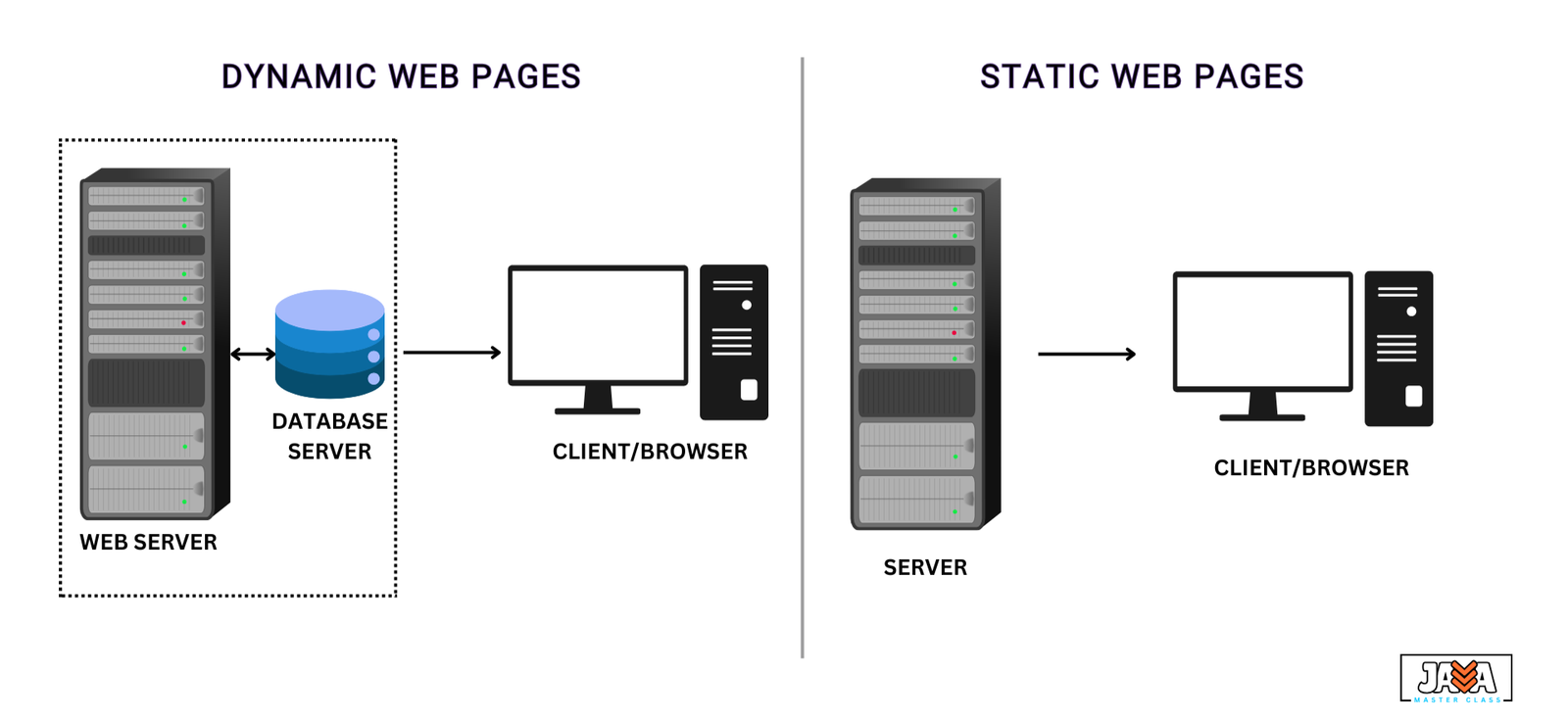When building websites, it’s essential to understand the difference between static and dynamic web pages, as they serve different purposes and have distinct characteristics.

Static Web Pages
Static web pages are the simplest type of web pages. Once created, their content remains unchanged unless manually updated. These pages are typically written in HTML and CSS, and they look the same for every visitor. Static pages are fast to load because they don’t require any processing or data retrieval from a server each time they’re viewed. Examples include personal portfolios or basic information websites.
Features of Static Pages
- Content is fixed and doesn’t change.
- Quick to load because no server-side processing is required.
- Created with HTML, CSS, and sometimes JavaScript.
- Ideal for small, informational websites with no need for frequent updates.
Dynamic Web Pages
Dynamic web pages, on the other hand, are created and displayed based on user input or data retrieved from a server (like a database). These pages can change in real-time, displaying personalized content to each user. When a user visits a dynamic web page, the server processes a script (like Java, PHP, or JavaScript) to generate the content before sending it to the browser.
Features of Dynamic Pages
- Content is generated on the fly, often based on user interaction or external data.
- Require a backend server or scripting language for content generation.
- Allow for interactive features like login systems, search functionality, and real-time updates.
- Ideal for websites that need to change content regularly, such as e-commerce platforms, blogs, or social media sites.
Summary of Differences
| Aspect | Static Web Pages | Dynamic Web Pages |
|---|---|---|
| Content | Fixed, does not change | Changes based on user interaction or data |
| Server Processing | No processing needed | Requires server-side processing |
| Speed | Fast, since no data retrieval is needed | Can be slower due to server-side generation |
| Technology | HTML, CSS, and minimal JavaScript | HTML, CSS, JavaScript, and server-side languages (e.g., Java, PHP) |
